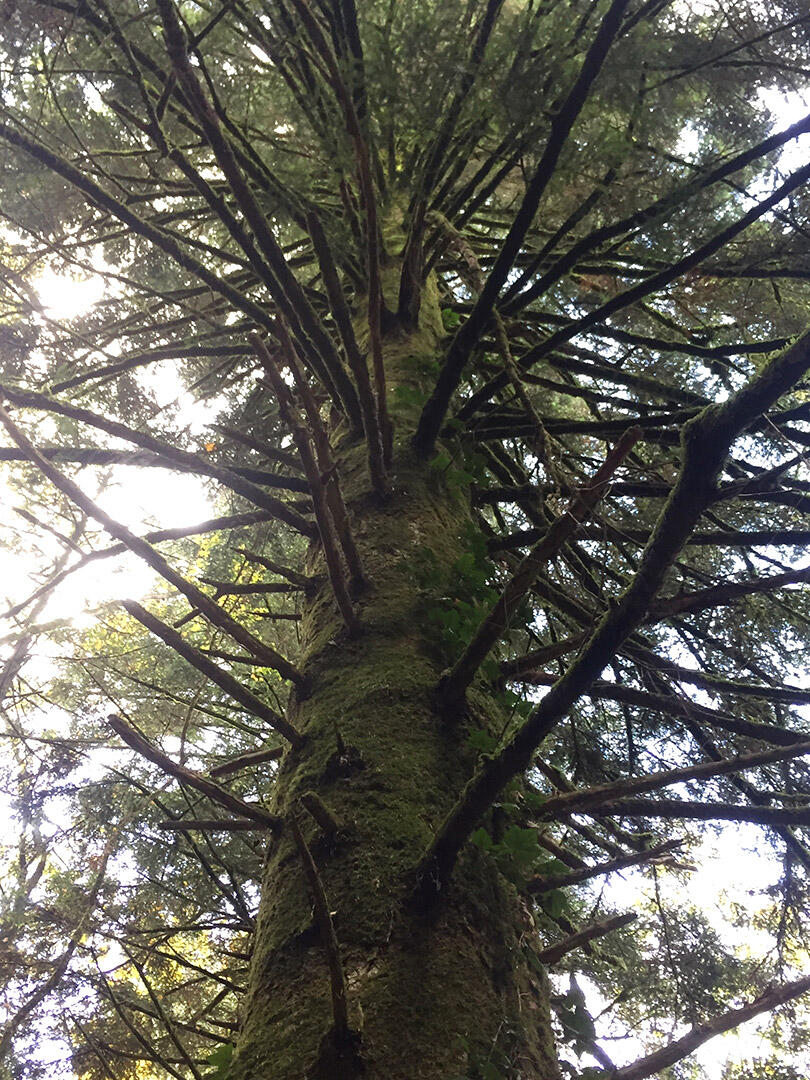Reading time: 7 minutes
Every year the Giant Trees Foundation (GTF), a non-profit based out of Udine (Friuli region), presents four living Italian giants for its Tree of the Year award. The winner goes on to “compete” for the European Tree of the Year. Obviously, it is not like a beauty pageant and favoring one contestant over another, but rather, raising awareness about the importance of saving- and replenishing- one of the planet’s most vital and beneficial living beings. Let’s find out more about the four trees the GTF has nominated this year and their stories that span centuries.
“The true meaning of life is to plant trees, under whose shade you do not expect to sit.”
Nelson Henderson

The “Twin Sequoia” Tree in Tuscany
If you know very much about trees, you probably know that the Sequoia (Sequoia sempervirens) is native to California, and especially the giant Sequoia (Sequoiadendron giganteum) only grows in a small area in the Sierra Nevada Mountains. So it may surprise you to find that there are a few examples of these trees in other parts of the world and in Italy.
The Sequoia Gemella specimen, as it has been named in Italian due to its split trunk, is found in the park surrounding the Sammezzano Villa in Reggello (Florence), Tuscany. It is the second-tallest tree in all of Italy measuring almost 54 meters (177 feet) and has a circumference of almost 8.5 meters (almost 28 feet). This is not a very old tree comparatively speaking with an estimated age of about 200 years. For reference, the giant Sequoia known as General Sherman located in the Sequoia National Forest of California is estimated to be 2,200 years old.

So how did the Sequoia Gemella end up near an eclectic castle not far from Florence? It was the curiosity and genius of Ferdinando Panciatichi Ximenes d’Aragona who decided to include a 65-hectare park and forest in his design when he built his villa. While many of the trees are holm oaks, Ferdinando was so passionate about botany that he had numerous rare and exotic species imported from all over the world. The Sequoia found here has managed to adapt well to the mild climate in conditions that are not very similar to its native environment.
Continue reading about Sammezzano Castle and the Sequoia Gemella
The Briganti Fir in Chieti, Abruzzo
The Abete dei Briganti towers among its companions in the Abetina di Rosello Nature Reserve in the Apennines of the central Abruzzo region. This extremely biodiverse environment has nurtured the white fir tree (Abies alba) allowing it to grow to an astounding height of 50.25 meters (165 feet) with a circumference of almost 5 meters (16 feet). Its age is estimated to be around 250 years old.
The fir’s name derives from the fact that it likely bore witness to Italy’s brigandage that was especially prominent in the mountains of Abruzzo, Basilicata, Campania, and Calabria immediately following the Unification of Italy.
Find out more about the Abetina di Rosello Nature Reserve on their official website.


The Larch of Val d’Ultimo in Bolzano, Trentino-South Tyrol
This magnificent larch tree that has been nominated for Tree of the Year is one of a group of three existing larch conifers (Larix decidua) representing the oldest of their kind in all of Europe. A fourth tree, which fell in 1930, was estimated to have more than 2,000 growth rings. The larch contestant has a tumor growing on its trunk which has added to its massive circumference of 8.34 meters (27 feet). It is 35 meters tall (115 feet) and would be even taller had it not lost part of its height over the centuries.
Larch wood is prized for its durability and resistance and is used for roof shingles in high-altitude climates such as the Dolomites of Trentino. In the local dialect, they are also known as Fledermauslarch (bat larches) because they shelter bats in their hollowed-out, rotting trunks.
You can find more information about trails leading to the ancient larch trees on the region’s official tourism website.

The Olive Tree of Luras, Sardinia
And finally, for the species of tree you have probably been expecting from an Italian Tree of the Year competition: the Olea europaea, an olive tree. The Olivastro di Luras is a noble example of this species that can live to be thousands of years old. The “Luras” is one of the oldest wild olive trees on the island and is thought to be between 3,000 and 4,000 years old!
“The Patriarch” – as it is rightfully referred to – is 14 meters tall (46 feet) with a circumference of 11 meters (36 feet) making it one very robust being. Every imperfection only adds to its immense character and intrigue and it isn’t difficult to imagine that it would have played an integral part in local folklore over the millennia.
For more information about how to see it in person, see the official website Olivari Millenari di Luras.

Make sure to visit the Giant Trees Foundation’s official website not only to cast your vote (voting ends November 20, 2023) but to also find out about how you can get involved with some of their amazing initiatives worldwide!
Read more about the trees in previous years’ competitions.
“Ancient trees are precious. There is little else on Earth that plays host to such a rich community of life within a single living organism.”
Sir David Attenborough


